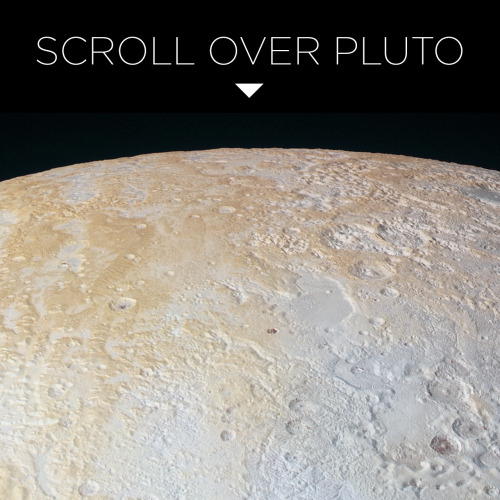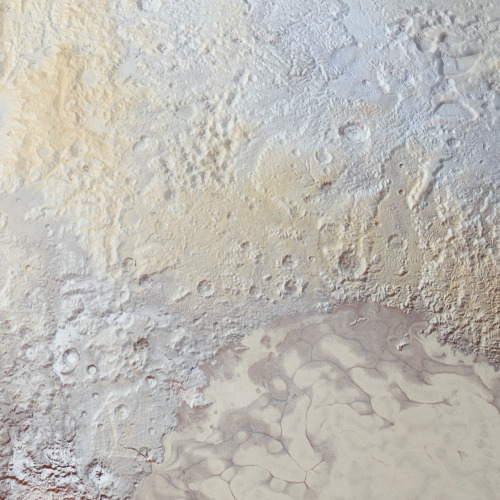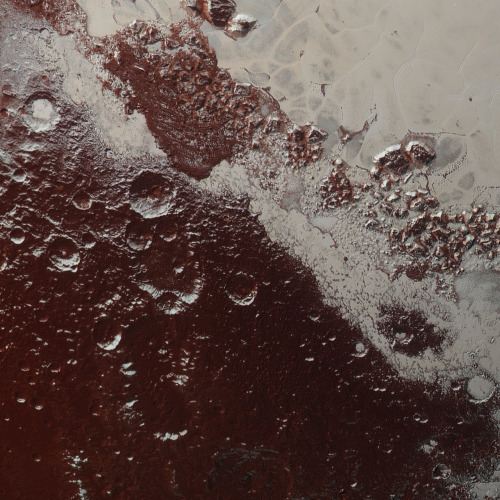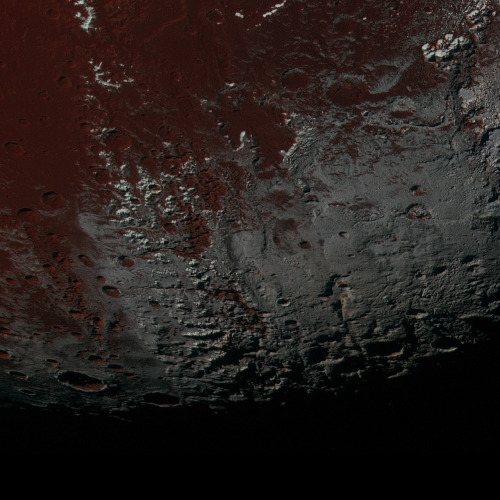Soviet Cosmonaut Sergei Krikalev Stuck In Space During The Collapse Of The Soviet Union In 1991
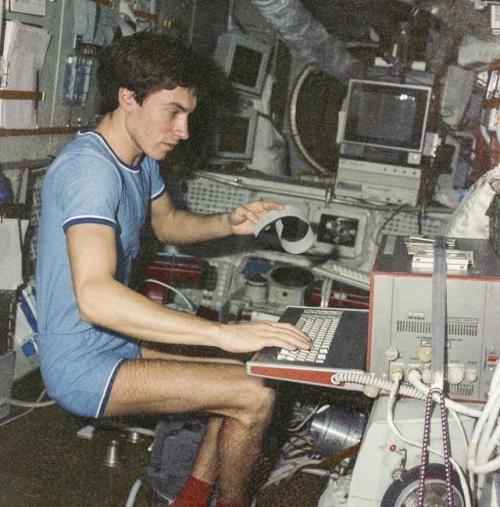
Soviet Cosmonaut Sergei Krikalev stuck in space during the collapse of the Soviet Union in 1991
Unable to return home, he ended up having to stay in space until further notice.
The cosmonaut eventually returned back to earth on March 25, 1992, after 10 months in orbit - to a nation that was very different to what it was when he had left. The Soviet Union had fractured into 15 nations, presidents had changed, and even his hometown of Leningrad had become St. Petersburg.
Interestingly, at the time, Krikalev was supposed to serve in the military reserves, and was almost issued a warrant for desertion – before the army realised that their reserve soldier was not even on the planet.
More Posts from Fillthevoid-with-space and Others

This Black Eye Galaxy that got its name from the band of light absorbing dust appearing in front of the star systems bright center in the Hubble space telescope.
via reddit

Earth is a super special world. It has life on it, and getting conditions just right so that life will survive is an incredibly difficult task. Other planets and other moons in our solar system may look like they could have life on them, but it just didn’t happen.
Life on other planets is for a different episode, though. In this one, I’m talking about what we can see on our close neighbors, the eight (maybe seven?) planets in our solar system. Learn how they were discovered, what naming conventions we use for them and their moons, how to differentiate between them, and what probes we’ve sent out to learn more about them. Also enjoy snippets from the lovely orchestral suite written for each planet by Gustav Holst! It’s the longest episode so far but I promise it’s worth it.
There’s a timeline below the cut in addition to the other resources because hooboy did I mention a lot of people. I may also put together a timeline of probes... But that’s for another podcast. Maybe the next podcast! Let me know what you think I should research by messaging me here, tweeting at me at @HDandtheVoid, or asking me to my face if you know me in real life. And please check out the podcast on iTunes, rate it or review it if you’d like, subscribe, and maybe tell your friends about it if you think they’d like to listen! Also below the cut are my sources, music credits, vocab list, and the transcript. I mention a book, a play, a poem, and a few works of art, and I quote an astronomy book in this episode so if you want to see that written down, those sources are there as well.
(My thoughts for the next episode were spectroscopy, auroras, or probes through the ages. Let me know by the 21st and I’ll have the next podcast up by July 31!)
Glossary:
auroras - a light display that occurs when a magnetosphere is sufficiently disturbed by solar wind that charged particles scatter into the upper atmosphere and lose their energy.
magnetosphere - an invisible barrier that surrounds a celestial objet. It is often generated by the movement of the liquid metal core of the object. Around a planet, it deflects high-energy, charged particles called cosmic rays that can either come from the Sun or, less often, from interstellar space.
prograde - when a planet spins from east to west.
retrograde - when a planet spins from west to east.
sol - a unit of time measuring one Martian day, or 24 Earth-hours and 40 Earth-minutes. The immediately previous Martian day is called yestersol.
transit of Mercury/Venus - when a planet passes in front of the Sun.
Script/Transcript
Timeline of people mentioned
Nicolaus Copernicus, Polish (1473-1543)
Tycho Brahe, Danish (1541-1601)
Galileo Galilei, Italian (1564-1642)
Johannes Kepler, German (1571-1630)
Simon Marius, German (1573-1625)
Pierre Gassendi, French (1592-1655)
Giovanni Cassini (also known as Jean-Dominique Cassini), Italian/French (1625-1712)
Christiaan Huygens, Dutch (1629-1695)
William Herschel, German/English (1738-1822)
Johann Elert Bode, German (1747-1826)
Caroline Herschel, German/English (1750-1848)
Johann Franz Encke, German (1791-1865)
John Herschel, English (1792-1871)
William Lassell, English (1799-1880)
Urbain Le Verrier, French (1811-1877)
Johann Galle, German (1812-1910)
John Couch Adams, English (1819-1892)
Edouard Roche, French (1820-1883)
Heinrich Louis d’Arrest, German (1822-1875)
Asaph Hall III, American (1829-1907)
James Clark Maxwell, Scottish (1831-1879)
Giovanni Schiaparelli, Italian (1835-1910)
Percival Lowell, American (1855-1916)
Eugène Antoniadi (also known as Eugenios Antoniadis), Greek (1870-1944)
Gerard Kuiper, Dutch/American (1905-1973)
Clyde Tombaugh (1906-1997)
Sources:
Who discovered each planet via Cornell University
The mathematical discovery of Neptune and Pluto via University of St. Andrews, where my mom’s boyfriend’s son graduated last year! Mad props, Henry!
Holst’s The Planets via the Utah Symphony
More on Holst’s suite, including music files
Chronology of solar system discovery
MESSENGER information via John Hopkins University Applied Physics Laboratory
Auroras via NASA’s Themis mission
Magnetospheres via NASA, which has a tumblr! You should follow it! Good stuff.
Curiosity rover via NASA
‘Canali on Mars’ debacle via NASA
Mariner 9 via NASA
Origin of ‘yestersol’ and Martian day-length via A Way With Words
Richard Bram: “Superlatives are inadequate; words fail. Look. Think. Be in awe.”
Images of Mars through the years via The Telegraph
Mars-One mission to colonize Mars
Names of all the planet’s moons and their significance in mythology, last updated in 2013 and questionably reliable but from what I know of mythology—and I do know more than most—it’s not too far off.
Table of moons of various planets
Jupiter via NASA
Jupiter moon name facts via NASA
The Galilean Moons of Jupiter via University of Colorado at Boulder
Saturn’s moons via Phys.org
Cassini mission website
Saturn overview via NASA
Saturn’s moon Titan via NASA
Ethane via PubChem
Methane via EPA
Neptune’s moons via Space.com
What is Pluto via NASA
Pluto Overview via NASA
“Dwarf planets may provide the best evidence about the origins of our solar system.”
New Horizons mission via NASA
Pluto and our designations for planets are mentioned very briefly in this Oatmeal comic. I liked it.
Sobel, Dava. The Planets. Viking: NY, 2005.
“But tides raised by the Sun in the planet’s molten middle gradually damped Mercury’s rotation down to its present slow gait” (34).
“Light and heat always hit Mercury dead on, while the north and south poles, which receive no direct sunlight, remain relatively frigid at all times” (35).
“Venusian clouds comprise large and small droplets of real vitriol—sulfuric acid along with caustic compounds of chlorine and fluorine. They precipitate a constant acid rain, called virga, that evaporates in Venus’ hot, arid air before it has a chance to strike the ground” (61).
“…Neptune, where the voices of a female choir, sequestered in a room offstage, are made to fade out at the finale (with no sacrifice in pitch) by the slow, silent closing of a door” (165).
Holst: “Saturn brings not only physical decay but also a vision of fulfillment” (165).
“They occupy a nearby region of perpetual fragmentation known as the Roche zone, named for the nineteenth-century French astronomer Edouard Roche, who formulated the safe distances for planetary satellites” (172).
“It's near twin, Neptune, reveals a more complex beauty in subtle stripes and spots of royal to navy blue, azure, turquoise, and aquamarine” (200).
“This outlying population offered Pluto a new identity—if not the last planet, then the first citizen of a distant teeming shore” (214).
Van Gogh, Vincent. Starry Night (June 1889).
—. Road with Cypress and Star (May 1890).
—. White House at Night (June 1890).
Shakespeare, William. A Midsummer Night’s Dream (1605).
Pope, Alexander. “The Rape of the Lock” (1712). (It’s a mock-epic satiric poem about stealing a lock of hair, not physical rape)
Duane, Diane. Wizards at War. Harcourt Trade Publishers: San Diego CA, 2005.
Intro Music: ‘Better Times Will Come’ by No Luck Club off their album Prosperity
Filler Music: The Planets (1918) by Gustav Holst, performed by the London Symphony Orchestra in 2003.
Outro Music: ‘Fields of Russia’ by Mutefish off their album On Draught

Did you know the government of New Mexico still considers Pluto to be a planet? In fact March 13th is “Pluto Planet Day”! So mark your calendars, it’s coming up.
Five Famous Pulsars from the Past 50 Years
Early astronomers faced an obstacle: their technology. These great minds only had access to telescopes that revealed celestial bodies shining in visible light. Later, with the development of new detectors, scientists opened their eyes to other types of light like radio waves and X-rays. They realized cosmic objects look very different when viewed in these additional wavelengths. Pulsars — rapidly spinning stellar corpses that appear to pulse at us — are a perfect example.

The first pulsar was observed 50 years ago on August 6, 1967, using radio waves, but since then we have studied them in nearly all wavelengths of light, including X-rays and gamma rays.
Typical Pulsar
Most pulsars form when a star — between 8 and 20 times the mass of our sun — runs out of fuel and its core collapses into a super dense and compact object: a neutron star.

These neutron stars are about the size of a city and can rotate slowly or quite quickly, spinning anywhere from once every few hours to hundreds of times per second. As they whirl, they emit beams of light that appear to blink at us from space.
First Pulsar
One day five decades ago, a graduate student at the University of Cambridge, England, named Jocelyn Bell was poring over the data from her radio telescope - 120 meters of paper recordings.

Image Credit: Sumit Sijher
She noticed some unusual markings, which she called “scruff,” indicating a mysterious object (simulated above) that flashed without fail every 1.33730 seconds. This was the very first pulsar discovered, known today as PSR B1919+21.
Best Known Pulsar
Before long, we realized pulsars were far more complicated than first meets the eye — they produce many kinds of light, not only radio waves. Take our galaxy’s Crab Nebula, just 6,500 light years away and somewhat of a local celebrity. It formed after a supernova explosion, which crushed the parent star’s core into a neutron star.

The resulting pulsar, nestled inside the nebula that resulted from the supernova explosion, is among the most well-studied objects in our cosmos. It’s pictured above in X-ray light, but it shines across almost the entire electromagnetic spectrum, from radio waves to gamma rays.
Brightest Gamma-ray Pulsar
Speaking of gamma rays, in 2015 our Fermi Gamma-ray Space Telescope discovered the first pulsar beyond our own galaxy capable of producing such high-energy emissions.

Located in the Tarantula Nebula 163,000 light-years away, PSR J0540-6919 gleams nearly 20 times brighter in gamma-rays than the pulsar embedded in the Crab Nebula.
Dual Personality Pulsar
No two pulsars are exactly alike, and in 2013 an especially fast-spinning one had an identity crisis. A fleet of orbiting X-ray telescopes, including our Swift and Chandra observatories, caught IGR J18245-2452 as it alternated between generating X-rays and radio waves.

Scientists suspect these radical changes could be due to the rise and fall of gas streaming onto the pulsar from its companion star.
Transformer Pulsar
This just goes to show that pulsars are easily influenced by their surroundings. That same year, our Fermi Gamma Ray Space Telescope uncovered another pulsar, PSR J1023+0038, in the act of a major transformation — also under the influence of its nearby companion star.

The radio beacon disappeared and the pulsar brightened fivefold in gamma rays, as if someone had flipped a switch to increase the energy of the system.
NICER Mission
Our Neutron star Interior Composition Explorer (NICER) mission, launched this past June, will study pulsars like those above using X-ray measurements.

With NICER’s help, scientists will be able to gaze even deeper into the cores of these dense and mysterious entities.
For more information about NICER, visit https://www.nasa.gov/nicer
Make sure to follow us on Tumblr for your regular dose of space: http://nasa.tumblr.com
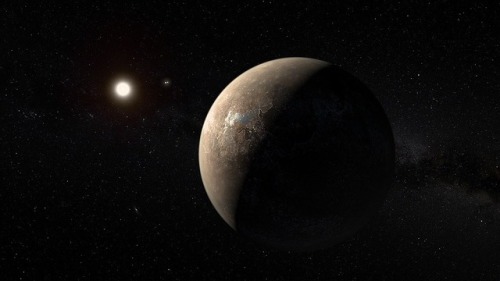
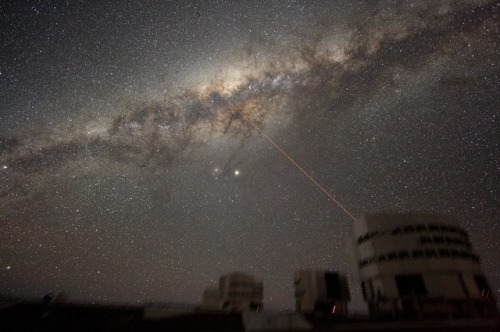
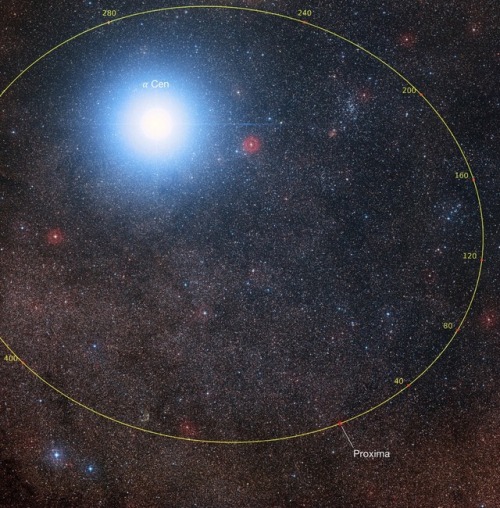
Life orbiting our closest star?
A planet has been found orbiting in the habitable zone of the closest star to earth, 4.2 light years away, named Proxima Centauri. The exoplanet, known as proxima b, has the mass of 1.27 earths but because of the shape of its orbit, the chances of it harbouring liquid water are fantastic. This vastly improves the chances that the planet sustains alien life.

(I broke the last link, whoops)
Another week of theory, but no fun new particles. Instead, hear me try to say a lot of names of scientists or their eponymous equations as I talk about dark energy in the universe! Learn what some astronomers think it is and why other astronomers think there are better explanations for certain nutty galactic phenomena.
Below the cut are my sources, music credits, a vocab list, and the transcript of this episode. Let your voice be heard and tell me what you think I should research next by messaging me here, tweeting at me at @HDandtheVoid, or asking me to my face if you know me in real life. And please subscribe to the podcast on iTunes, rate it and maybe review it, and tell friends if you think they’d like to listen!
(If anything about dark matter or dark energy or cosmic microwave background radiation confused you over the past few podcasts, for sure send me your questions so I can ask someone more qualified than me—my doctorate student friend! My thoughts on the next episode are still the Voyager golden records, space race history, the transit of Venus, the Moon landing, Edmond Halley, or Dark Sky Preserves and it will be up on November 20th.)
Glossary
baryons - heaviest particles. Ex. Protons, neutrons. In astroparticle physics, electrons are included in baryonic matter.
cosmic microwave background radiation - the electromagnetic radiation left over from the time of recombination in Big Bang cosmology.
dark energy - a theoretical force made up of unknown, undetectable energy. It is used to explain why the universe is expanding more rapidly over time instead of slowing its expansion.
dark matter - a theoretical mass made up of unknown particles that have not been created on Earth. It is used to explain why galaxy clusters have 10x the mass that their light output suggests they would have; why distant stars on the edges of spiral galaxies orbit at the same speed as stars near the center of the galaxy; and the accretion of gases that created galaxies at the beginning of the universe.
fundamental forces - four fundamental forces in our current model of the universe: the strong and weak nuclear forces, the electromagnetic force, and gravity.
gravitational lensing - when light from more distant sources passes near a massive star, galaxy, or galaxy cluster and the object’s gravity bends the light like a lens to provide a warped angle view of space.
Transcript
Sources
Dark energy via NASA
Dark energy via Hubble
“The strangeness of dark energy is thrilling.”
Fundamental forces via Georgia State University
Dark energy via Science Magazine (April 2017)
László Dobos: “We assume that every region of the universe determines its expansion rate itself.”
Dark energy and the South Pole Telescope via Smithsonian Magazine (April 2010)
“Knowing what dark matter is would help scientists think about how the structure of the universe forms. Knowing what dark energy does would help scientists think about how that structure has evolved over time—and how it will continue to evolve.”
Intro Music: ‘Better Times Will Come’ by No Luck Club off their album Prosperity
Filler Music: ‘Even The Darkness Has Arms’ by The Barr Brothers off their album The Sleeping Operator
Outro Music: ‘Fields of Russia’ by Mutefish off their album On Draught
Planets i learned about via youtube while procrastinating my english essay
Planet 55 Cancri e is basically a giant diamond. like the planet is a diamond. and it would be worth $26.9 nonillion
Planet Gliese 436 b is an ice planet that is constantly on fire do to its close proximity to its parent star. the ice doesn’t melt bc the planet’s gravity is so strong it physically prevents the ice from melting
Planet HD 189733b rains sideways glass…. constantly
Planet J1407-B has planetary rings that are 200x the size of saturn. if saturn’s ring were as big as J1407-B’s we’d be able to see them with our naked eye from earth AND they would dominate our sky and look larger than a full moon
Planet Wasp-12b rotates so close to its parent star that its slowly being consumed by the it
Planet Gliese 581c is one of the candidates for a planet that can support life however it orbits a tiny dwarf star and is tidally locked so one side is constantly subject to immense sunlight while the other is constantly in darkness. there’s a small area of the planet however, that is just the right temp to support life. u just can’t step out of said area. the skies are red and the plants would have be a black color instead of a green bc they would use infrared light for photosynthesis. (a message was actually sent to the planet in 2008 in hopes that there’s life on the planet but the message wont reach the planet until 2029).
Planet GJ 1214b is a water planet nicknamed “water world” is has no land at all and the water is so deep it goes down miles all the way to the planet’s core.
Planet Wasp-17b is the largest planet discovered thus far. its so large its existence contradicts our understanding of how planets are formed. and it has a retrograde orbit, so it orbits in the opposite direction of its parent star.
Planet HD 188753 has 3 suns you should have triple shadows and there would be almost daily eclipses. and no matter which direction u face on the planet u would always see a sunset
Planet HD106906b is the loneliest planet discovered thus far. its known as “super jupiter” bc its 11x bigger than jupiter. it orbits its parent star at a distance of 60 billion miles (which is v strange) hence why its the loneliest planet.
Planet Tres 2b is the darkest planet known. it reflects less than 1% of light (it reflects less light than coal and black acrylic paint). the tiny part of the planet that does reflect light is red making the planet glow a dim red.

Did you know that when we classify stars, we’re comparing different types of stars but also stars at different stages of their life cycles? This is the second in a two-part episode about star classifications (go listen to Part 1 if you haven’t already; or listen to this one first and then listen to Part 1, it’s not exactly spoiler territory here). In this podcast, I talk about the various ways we've chosen to interpret observational data on stars, from observing the bright sky-dots to evaluating how bright they are by comparing them to each other, and all the new things we can do with new observational techniques. Never fear, Harvard observatory’s computers make a significant appearance again in this one!
I did my best to explain everything in as comprehensible terms as possible but you can hit me up with questions if you have them! I’m also on Twitter at @HDandtheVoid if you’d rather ask me there. And go ahead and check out the podcast on iTunes, rate it or review it if you’d like, and subscribe! I’ll always post all the extras here on tumblr but iTunes is probably more convenient for downloading.
Below the cut are my sources, music credits (thanks Elena for the filler music suggestion, very on-the-nose), vocab list, and the transcript. I mention a couple of books and quote a couple people in this episode so if you want to see that written down, those sources are there as well. Let me know what you think of this episode, let me know what you think I should research next*, tell me a fun space fact… anything’s helpful!
*(My thoughts were planets or looking into a couple major astronomers; either Edmond Halley or Tycho Brahe <3 or maybeStephen Hawking? Let me know by the 23rd so I can get a podcast up by July 3rd!)
Glossary:
Charge-Coupled Device (CCD) - a device that moves an electrical charge to shift the signal between incoming photons to turn them into electron charges that can then be read as an image. It’s used in digital cameras and in astronomy for UV-to-infrared applications.
deep-sky object - any cosmological object that isn’t individual stars or something from our Solar System. It’s a classification that includes nebulae, galaxies, and star clusters, and it has its roots in amateur astronomy.
Hipparcos satellite - the European Space Agency ‘high precision parallax collecting satellite’ that operated between 1989 and 1993. It gathered astronomical and photometric data of stars and was highly accurate in positioning and cataloging the star information it acquired on its four-year mission. Its data was published in 1997 in two catalogs: the Hipparcos Catalogue, distributed in print as well as on CDs and mapped 118,218 stars; and the Tycho Catalogue, distributed only on CDs and mapped 1,058,332 stars. The Tycho-2 Catalogue was an updated version of the Tycho Catalogue made with more refined imaging techniques and re-released on CDs and online in 2000 with over 2 million stars mapped.
neutron star - a type of star that has gone supernova, when the surviving core is 1.5 to 3 solar masses and contracts into a small, very dense, very fast-spinning star.
pulsar - a type of neutron stars that spins very, very fast: a kind of variable star that emits light pulses usually between 0.0014 seconds and 8.5 seconds.
stellar photometry/photometrics - measuring the brightness of stars and the changes of brightness over time. Previously used photographic plates and visual equipment in professional observatories, but shifted after an international photoelectric system was established in 1951. Currently we use photoelectric devices, such as CCDs.
stellar spectra classification - developed at Harvard Observatory in the 20th century, a categorization of stars based on stellar surface temperatures rather than actual compositional differences, gravity, or luminosity in stars. From highest temperature to lowest, the seven main stellar types are O, B, A, F, G, K, and M. O, B, and A type stars are often referred to as early spectral types, while cool stars like G, K, and M are known as late type stars, even though these titles are based in disproven ideas about stellar evolution.
Script/Transcript
Sources:
Standard stellar types via University of College London
List/timeline of major historical star catalogs
A brief history of early star catalogs, since the International Astronomical Union made a new star catalog in 2016.
A history of the Messier list
A history of the Messier List and how amateur astronomers use it
The Messier List
A really detailed Messier List, including Messier’s own observations on the object along with what it is currently understood to be
`Deep Sky Observers Companion online database
The Caldwell List via SEDS
The Caldwell List via the Astronomical League
Translation of ‘Durchmusterung’ via PONS online translation
Some hilarious mnemonics that are an alternative to the girl-kissing one to remember the order of stellar spectra. I don't know why there’s an entire page dedicated to this but good on you, Caltech.
Photometry overview via the Astronomical Society of South Australia
Hipparcos Catalog via NASA
History of the Hipparcos satellite and subsequent catalogs via ESA
Tycho-2 Catalog via NASA
The Hipparchos and Tycho catalogues online and downloadable if you have a whole lot of storage space to put them in
The U.S. Navy’s Naval Meteorology and Oceanography Command website has a list of recommended informational catalogs, last updated in November 2004
Information on current star charts, specialized and general, and how to download them
The Research Consortium on Nearby Stars’ website, working on cataloging and characterizing all stars within 10 parsecs/32.6 light years of Earth
The Smithsonian Astrophysical Observatory star catalog, which goes to V=9. Please don’t ask me how the hell it works, I didn’t bother ordering it
Another SAO catalog via NASA’s High Energy Astrophysics Science Archive Research Center website
If you can figure out how to navigate this catalog, you should probably take over this podcast for me.
Soba, Dava. The Glass Universe: How the Ladies of the Harvard Observatory Took the Measure of the Stars. Viking: New York, 2016.
“After all, astronomers could not yet tie any given traits of stars, such as temperature or age, to the various groupings of spectral lines. What they needed was a consistent classification—a holding pattern for the stars—that would facilitate fruitful future research” (91).
“A good number of other blank spaces in her tables pointed up other lacunae, such as missing minimum values, uncertain periods, absent spectra, or questionable variable type” (113).
Annie Jump Cannon: “Since I have done almost all the world’s work in this one branch, it was necessary for me to do most of the talking” (158)
Ogilvie, Marilyn Bailey. Women in Science: Antiquity Through the Nineteenth Century. MIT P: Cambridge, MA, 1986. Located in Google Books preview.
Mack, Pamela E. “Straying from Their Orbits: Women in Astronomy in America.” In Women of Science: Righting the Record. Ed. Gabriele Kass-Simon, Patricia Farnes, Deborah Nash. Indiana U P: Bloomington, IN, 1993 (72-116). Located in Google Books preview.
Selin, Helaine. “Battani” Encyclopaedia of the History of Science, Technology, and Medicine in Non-Western Cultures. Springer Science & Business Media: Berlin, Germany, 2011. Located in Google Books preview.
Intro Music: ‘Better Times Will Come’ by No Luck Club off their album Prosperity
Filler Music: ‘Champagne Supernova’ by Oasis off their album (What’s the Story) Morning Glory?
Outro Music: ‘Fields of Russia’ by Mutefish off their album On Draught

ASTROGENOUS
[adjective]
producing or creating stars.
Etymology: from Greek, from astron “star” + -genēs “born”.
[J. R. Slattum - Star Maker]
-
 thatrobotgirl liked this · 2 weeks ago
thatrobotgirl liked this · 2 weeks ago -
 submerged-in-stories liked this · 4 months ago
submerged-in-stories liked this · 4 months ago -
 namelessman2 liked this · 5 months ago
namelessman2 liked this · 5 months ago -
 totally-am-not-a-witch liked this · 7 months ago
totally-am-not-a-witch liked this · 7 months ago -
 sams-favourite-potato liked this · 8 months ago
sams-favourite-potato liked this · 8 months ago -
 ransomnoteworthy liked this · 9 months ago
ransomnoteworthy liked this · 9 months ago -
 glitterygolem liked this · 11 months ago
glitterygolem liked this · 11 months ago -
 gsunny6 liked this · 11 months ago
gsunny6 liked this · 11 months ago -
 ghost-r0bot reblogged this · 1 year ago
ghost-r0bot reblogged this · 1 year ago -
 weepingkingdomperfection liked this · 1 year ago
weepingkingdomperfection liked this · 1 year ago -
 supremeyellow reblogged this · 1 year ago
supremeyellow reblogged this · 1 year ago -
 supremeyellow reblogged this · 1 year ago
supremeyellow reblogged this · 1 year ago -
 rociopath liked this · 1 year ago
rociopath liked this · 1 year ago -
 crowcoyote liked this · 1 year ago
crowcoyote liked this · 1 year ago -
 impressionthatiget liked this · 1 year ago
impressionthatiget liked this · 1 year ago -
 ferxlex reblogged this · 1 year ago
ferxlex reblogged this · 1 year ago -
 this-doesnt-endd liked this · 1 year ago
this-doesnt-endd liked this · 1 year ago -
 witchweedz liked this · 1 year ago
witchweedz liked this · 1 year ago -
 littl3misstrange reblogged this · 1 year ago
littl3misstrange reblogged this · 1 year ago -
 littl3misstrange liked this · 1 year ago
littl3misstrange liked this · 1 year ago -
 gf-boyfriend reblogged this · 1 year ago
gf-boyfriend reblogged this · 1 year ago -
 gf-boyfriend liked this · 1 year ago
gf-boyfriend liked this · 1 year ago -
 sail-to-live liked this · 1 year ago
sail-to-live liked this · 1 year ago -
 shadesofhappy reblogged this · 1 year ago
shadesofhappy reblogged this · 1 year ago -
 harmonic-psyche liked this · 1 year ago
harmonic-psyche liked this · 1 year ago -
 cowlifeguard liked this · 1 year ago
cowlifeguard liked this · 1 year ago -
 patty-anne liked this · 1 year ago
patty-anne liked this · 1 year ago -
 omnicinnamonroll liked this · 1 year ago
omnicinnamonroll liked this · 1 year ago -
 wildgooseattack reblogged this · 1 year ago
wildgooseattack reblogged this · 1 year ago -
 wildgooseattack liked this · 1 year ago
wildgooseattack liked this · 1 year ago -
 w3r3wolfgirlfri3nd liked this · 1 year ago
w3r3wolfgirlfri3nd liked this · 1 year ago -
 lighthouse-at-the-edge-of-space liked this · 1 year ago
lighthouse-at-the-edge-of-space liked this · 1 year ago -
 frenchfurious reblogged this · 1 year ago
frenchfurious reblogged this · 1 year ago -
 pandorasparad0x liked this · 1 year ago
pandorasparad0x liked this · 1 year ago -
 vivizn liked this · 1 year ago
vivizn liked this · 1 year ago -
 theyrejustbehindtheveil liked this · 1 year ago
theyrejustbehindtheveil liked this · 1 year ago -
 the-interabang reblogged this · 1 year ago
the-interabang reblogged this · 1 year ago -
 alltimecharlo liked this · 1 year ago
alltimecharlo liked this · 1 year ago -
 the-interabang liked this · 1 year ago
the-interabang liked this · 1 year ago -
 ibundasoang reblogged this · 1 year ago
ibundasoang reblogged this · 1 year ago -
 would-we-be-friends-if-i reblogged this · 1 year ago
would-we-be-friends-if-i reblogged this · 1 year ago -
 grandmacookie69 reblogged this · 1 year ago
grandmacookie69 reblogged this · 1 year ago -
 mosstardust reblogged this · 1 year ago
mosstardust reblogged this · 1 year ago -
 mosstardust liked this · 1 year ago
mosstardust liked this · 1 year ago -
 sdtopham liked this · 1 year ago
sdtopham liked this · 1 year ago
A podcast project to fill the space in my heart and my time that used to be filled with academic research. In 2018, that space gets filled with... MORE SPACE! Cheerfully researched, painstakingly edited, informal as hell, definitely worth everyone's time.
243 posts
